Objective:
This article will explain
-
Data Contract hierarchy
-
How base class and sub class are getting exposed in WCF?
-
What is Known Type attribute
-
Mixing of sterilization and DataContract
Data Contract Hierarchy

-
If any class in hierarchy is not attributed as [DataContract] or [serilizable] then InvalidDataContractException will occur at service run time.
-
WCF allows mixing
[DataContract] and
[Serilizable] attribute. But [Serilizable] should be at the root of the DataContract hierarchy.
Examples:

Mixing of DataContract and Serilizable

Follow the below code,
-
There are two classes in hierarchy
-
Let us try to refer derive child class in base class,
Contract and classes
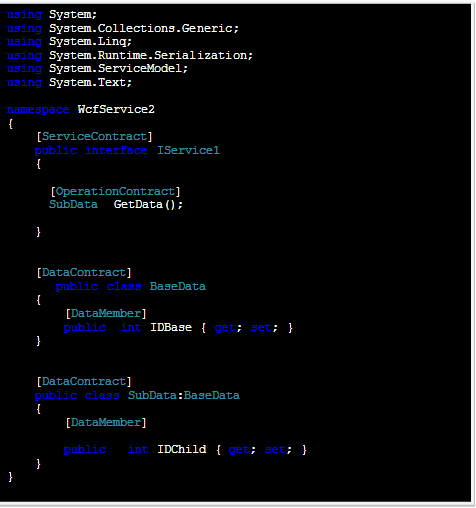
Error Service implantation

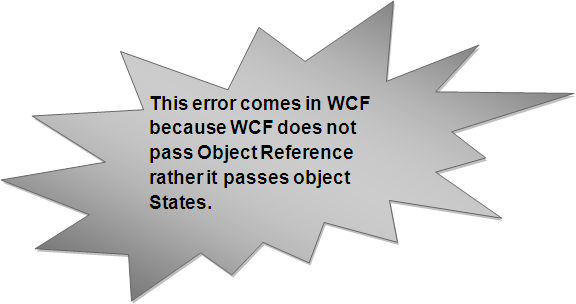
How to solve this problem?
KnownTypeAttribute
-
The solution is to explicitly tell WCF about the sub class to the base class.
-
This is done using
KnownType Attribute class.This class is defined as below in System.Runtime.Serilization namespace.
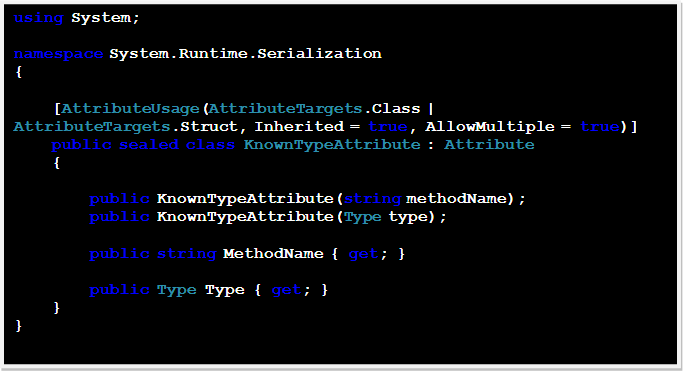
-
The
KnownTypeAttribute allows designating the sub class.
Example
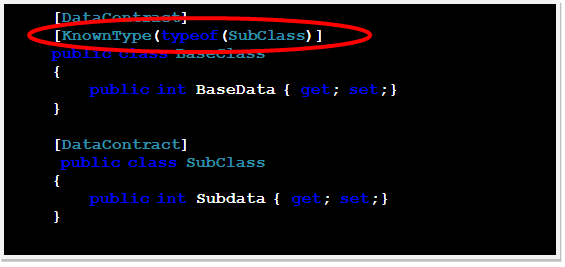
-
On the host side the KnownTypeAttribute affects all contracts and operations using the base class across all services and endpoints. This allows accepting subclass instead of base class.
-
WCF includes sub class in metadata such that client can also pass the sub class instead of base class.
ServiceKnownTypeAttribute
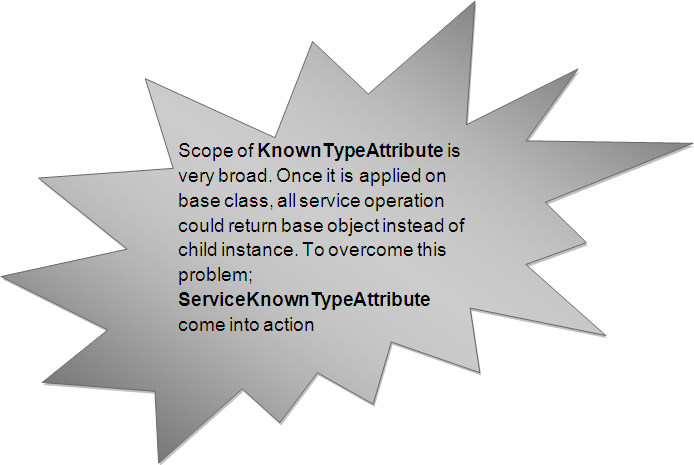
ServiceKnownTypeAttribute class
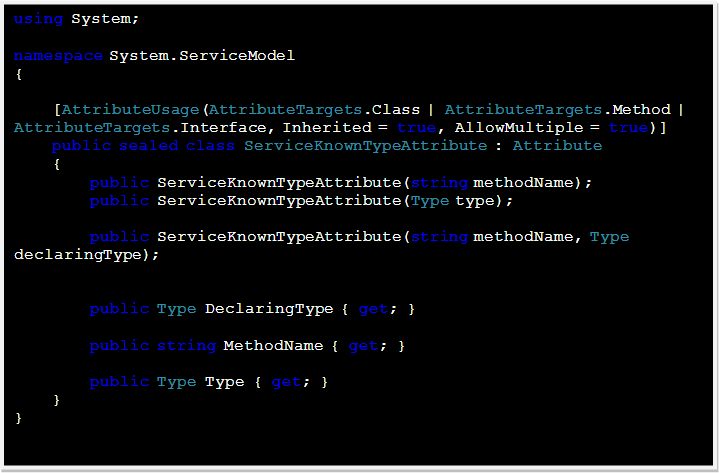
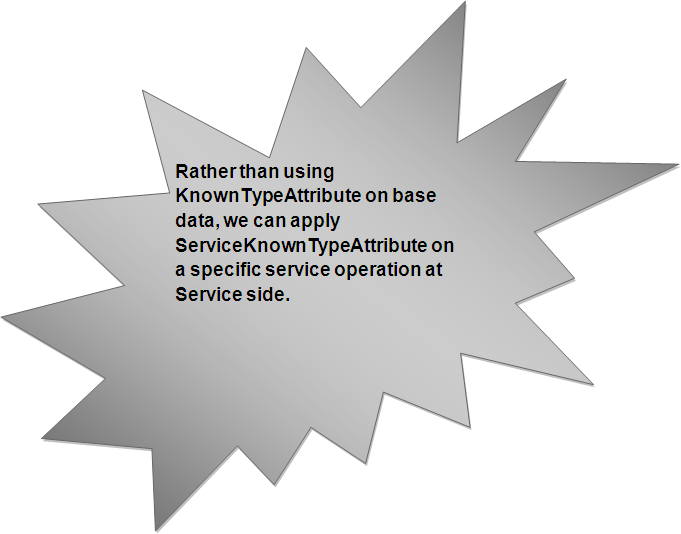

ServiceKnownType could be applied on a particular service operation or to entire service contract.